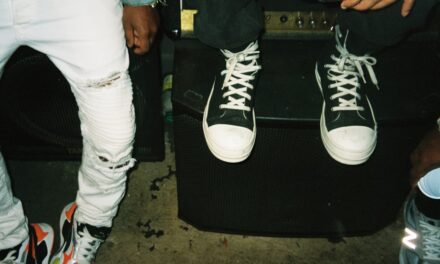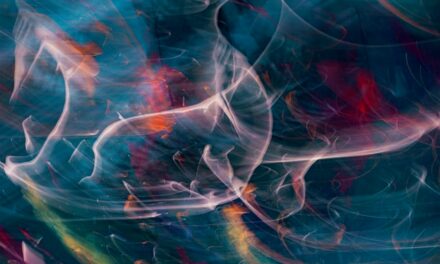Wax encaustic, a time-honoured technique that dates back to ancient civilisations, has seen a resurgence in contemporary art practices. This method involves the use of heated beeswax mixed with coloured pigments, allowing artists to create richly textured and luminous surfaces. The term “encaustic” itself is derived from the Greek word “enkaustikos,” meaning “to heat or burn in.” This technique not only offers a unique aesthetic but also provides a versatile medium for expression, making it a favourite among mixed media artists.
The interplay of wax and pigment creates a depth that is difficult to achieve with other materials, inviting viewers to engage with the artwork on multiple levels. The beauty of wax encaustic lies in its adaptability. Artists can manipulate the wax in various ways, layering it, carving into it, or even embedding objects within it.
This flexibility allows for an exploration of both form and content, as the medium can convey a sense of fragility and permanence simultaneously. As we delve deeper into the world of wax encaustic techniques, we will uncover the materials and tools necessary for this practice, as well as basic and advanced techniques that can elevate your mixed media projects. Whether you are a seasoned artist or a curious beginner, the allure of wax encaustic is sure to inspire your creative journey.
Summary
- Wax encaustic techniques involve using heated beeswax mixed with pigments to create art.
- Materials and tools for wax encaustic include beeswax, damar resin, pigments, brushes, and a heat source.
- Basic wax encaustic techniques for mixed media include layering, fusing, and adding texture with tools.
- Advanced wax encaustic techniques for mixed media involve incorporating collage, image transfer, and embedding objects.
- Combining wax encaustic with other mixed media allows for endless creative possibilities, such as incorporating photography, paper, and found objects.
Materials and Tools for Wax Encaustic
To embark on your wax encaustic journey, it is essential to gather the right materials and tools. The primary ingredient is, of course, beeswax, which can be purchased in blocks or pellets. When selecting beeswax, consider opting for pure, natural beeswax to ensure the best results.
Additionally, damar resin is often added to the wax mixture to enhance its hardness and improve adhesion. This combination creates a durable surface that can withstand various artistic techniques. In terms of tools, a heat source is crucial for melting the wax.
Many artists prefer using a hot plate or a heat gun, as these allow for precise temperature control. Brushes made from natural bristles are ideal for applying the wax, as they can withstand the heat without melting. Palette knives and scrapers are also useful for manipulating the wax and creating texture.
Furthermore, a variety of substrates can be employed, including wood panels, canvas, and even paper. Each surface offers different qualities that can influence the final outcome of your artwork.
Basic Wax Encaustic Techniques for Mixed Media
Once you have gathered your materials and tools, it is time to explore some basic wax encaustic techniques that can serve as a foundation for your mixed media projects. One of the simplest methods is layering, where you apply successive coats of wax to build depth and complexity. Start by melting a thin layer of wax onto your chosen substrate and allow it to cool slightly before adding another layer.
This process can be repeated multiple times, creating a rich tapestry of colour and texture. Another fundamental technique is incising, which involves carving into the wax surface to create patterns or images. After applying a layer of wax, use a sharp tool to etch designs into the surface before adding additional layers.
This technique not only adds visual interest but also allows for the exploration of negative space within your artwork. Additionally, you can experiment with embedding materials such as fabric, paper, or found objects into the wax while it is still warm. This method adds dimension and narrative elements to your work, inviting viewers to discover hidden stories within the layers.
Advanced Wax Encaustic Techniques for Mixed Media
As you become more comfortable with basic techniques, you may wish to delve into advanced wax encaustic methods that can further enhance your artistic practice. One such technique is fusing, which involves using heat to bond layers of wax together seamlessly. This process requires careful control of temperature; too much heat can cause the wax to become overly fluid, while too little may prevent proper adhesion.
Mastering fusing will allow you to create smooth transitions between colours and textures, resulting in a polished finish. Another advanced technique is the use of cold wax medium in conjunction with encaustic. Cold wax is typically made from beeswax and solvent, allowing for a thicker consistency that can be manipulated without heat.
By combining cold wax with traditional encaustic methods, artists can achieve unique effects such as impasto textures or subtle glazes. This hybrid approach opens up new avenues for experimentation and expression within your mixed media work.
Combining Wax Encaustic with Other Mixed Media
One of the most exciting aspects of wax encaustic is its compatibility with other mixed media materials. Artists can incorporate elements such as acrylics, oils, pastels, and even photography into their encaustic works. For instance, applying acrylic paint beneath a layer of encaustic can create vibrant colour contrasts that enhance the overall composition.
Alternatively, you might consider using oil paints on top of encaustic layers; however, it is essential to ensure that the oil paint is fully dry before applying wax to avoid any adverse reactions. Collage techniques also lend themselves beautifully to wax encaustic. By embedding paper or fabric into the warm wax, you can create intricate layers that tell a story or evoke emotion.
Consider using printed images or text as part of your composition; these elements can be enhanced by the translucency of the wax, allowing them to interact with underlying layers in captivating ways. The possibilities are virtually limitless when combining encaustic with other media, encouraging artists to push boundaries and explore new creative territories.
Troubleshooting and Tips for Wax Encaustic
Even Application of Wax
As with any artistic medium, working with wax encaustic may present challenges along the way. One common issue is achieving an even application of wax; if the surface appears uneven or streaky, it may be due to inconsistent heating or application techniques. To remedy this, ensure that your heat source is set at an appropriate temperature and experiment with different brush strokes or tools to achieve a smoother finish.
Avoiding Overworking the Wax
Another potential hurdle is the risk of overworking the wax. Whilst it may be tempting to continuously manipulate the surface, excessive heating can lead to a loss of texture and vibrancy in your work. It is advisable to step back periodically and assess your progress rather than constantly refining every detail.
Layering and Cooling
Additionally, always allow each layer to cool before adding more wax; this will help maintain clarity and prevent muddiness in your colours.
Inspiration and Ideas for Wax Encaustic Mixed Media Projects
Finding inspiration for your wax encaustic projects can be an exciting part of the creative process. Consider exploring themes such as nature, memory, or personal narratives; these concepts lend themselves well to the layered qualities of encaustic work. For instance, you might create a series of pieces inspired by landscapes, using natural pigments derived from earth or plant materials to evoke a sense of place.
Another idea is to incorporate text into your encaustic pieces. This could involve embedding handwritten notes or printed words within the layers of wax, creating a dialogue between image and text that invites viewers to engage more deeply with your work. Additionally, consider experimenting with colour palettes that resonate with specific emotions or experiences; this exploration can lead to powerful visual statements that resonate on multiple levels.
Conclusion and Further Resources for Wax Encaustic Techniques
In conclusion, wax encaustic techniques offer a rich and versatile medium for artists seeking to explore mixed media practices. From basic layering methods to advanced fusing techniques, there are countless ways to engage with this ancient art form while infusing it with contemporary relevance. As you embark on your own encaustic journey, remember that experimentation is key; allow yourself the freedom to make mistakes and learn from them.
For those looking to deepen their understanding of wax encaustic techniques further, numerous resources are available. Books such as “The Art of Encaustic Painting” by Joanne Mattera provide valuable insights into both historical context and practical applications. Online tutorials and workshops can also offer hands-on guidance from experienced artists in the field.
Embrace this opportunity to explore the captivating world of wax encaustic art; who knows what creative discoveries await you?
If you are interested in exploring different art techniques, you may also enjoy reading about Urban Calligraphy: Blending Traditional Lettering with Modern Vibe. This article delves into the fusion of traditional calligraphy with contemporary urban styles, offering a fresh perspective on this timeless art form. Just like Wax Encaustic Techniques for Mixed Media, urban calligraphy showcases the versatility and creativity that can be achieved through innovative artistic practices.
FAQs
What is encaustic wax?
Encaustic wax is a mixture of beeswax, resin, and pigment that is melted and applied to a surface, typically wood, to create a painting or mixed media artwork.
What are some techniques for using encaustic wax in mixed media?
Some techniques for using encaustic wax in mixed media include layering, embedding objects, collage, incising, and using a variety of tools to manipulate the wax.
What surfaces can encaustic wax be applied to?
Encaustic wax can be applied to a variety of surfaces including wood, canvas, paper, and even metal. It is important to prepare the surface properly to ensure adhesion.
What are the benefits of using encaustic wax in mixed media artwork?
Encaustic wax offers artists a versatile and durable medium that can be layered, carved, and manipulated in various ways. It also provides a unique translucency and depth to artwork.
What safety precautions should be taken when working with encaustic wax?
When working with encaustic wax, it is important to use proper ventilation, as well as to be mindful of the hot wax and tools. It is also recommended to use a respirator mask and gloves to protect against fumes and burns.



